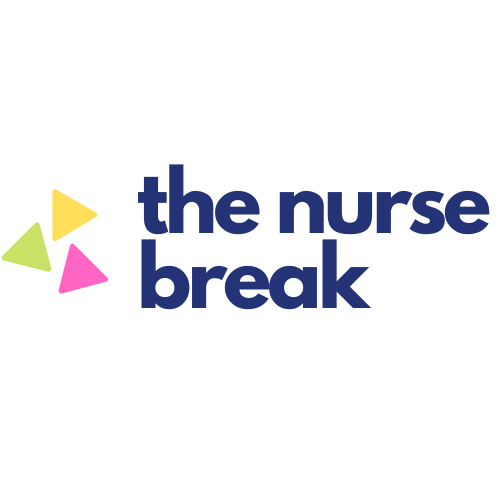Table of Contents
Clinical Education – but I don’t have time…
Read more from In Pursuit of Excellence
Almost certainly the biggest barrier I hear on a regular basis from clinicians who are asked to participate in the delivery of clinical education is time. Clinical environments are busy places with lots going on and there’s always something else that needs to be done. Literature supports that barriers to clinical education result from time pressures, competing work demands, the unpredictable nature of the clinical environment and under-resourcing (Spencer, 2003; Ramani & Leinster, 2008). In the current climate, with severe staffing shortages, those difficulties are only increasing.
The need for support, supervision and clinical teaching is increasing with higher than usual levels of relief staff, agency staff and lots of new graduates entering the system. Many of those new graduates may have completed the majority of their undergraduate training during COVID, under a very different model of education and unusual placement experiences, making their transitional experience even more daunting. As a core staff member of a department it would be easy to pick up a bed pan and hide out in the utility room until all this blows over, except for the fact that there doesn’t seem to be an end in sight (just yet), and the ramifications of not making time for clinical education are so erosive to the safety and quality of our health system that it doesn’t bear thinking about.
In my first blog Clinical Education – whose job is it anyway, I discussed the essential need to make education core business to our nursing and organisational responsibilities, but we also need to broaden the way we think about what contributing to clinical education means. Contributing to someone’s professional development doesn’t always need to be a formal thing, nor does it need to be you lecturing to someone for hours on end. It can be much simpler than that, and lots of simple things done well, can go a long way to providing people with genuine and meaningful development opportunities. These opportunities have the benefit of being in real time, with relevance firmly established.
So how do we make time for clinical education and embed it into business as usual nursing practice?
First things first: ensure you are not making excuses. While sometimes we are genuinely too busy, other times ‘I don’t have time’ can just be a convenient excuse and an easy way out. I once presented on ‘strategies to implement an education program in your unit’ at a symposium. At the end there was a person who kept asking questions, and when I gave a response or suggestion, she would tell me why it just wouldn’t work. When our default setting is ‘that won’t work’ or ‘I don’t have time’, we are making excuses. Sadly such negative attitudes go on to grow negative culture, which in turn disengages those who work in them.
‘I’m here for my patients not to train or supervise other people’ is another good one I’ve heard over the years. When we stop understanding that the concepts of ‘being there for your patient’ and ‘contributing to the professional development of those around you are synonymous with each other, the truth is we are not there for the patients at all. You can start small. Make a commitment to sharing your knowledge on a particular subject or a specific skill with just one person, for a few minutes, throughout each shift and help to contribute to positive workplace culture.
Beyond that?
Find the teachable moments in everyday activities. This might be in simple activities such as admitting or discharging a patient, in reviewing observations together, conducting a clinical assessment, watching a medical round, or administering a medication. It can also be knowing what procedures or clinical skills might be happening within the ward during the shift and facilitating observation or participation in that: for example assisting with a drain removal or dressing, watching an intubation or line insertion, or accompanying the patient to x-ray.
Use questions. Closed questions can be used to establish facts (e.g. Yes/No questions) and open ended questions can be used to promote extended thinking. ‘Why do you think I did that?’, ‘What did you interpret from that assessment?’, ‘What things do you think might be happening here?’ These questions can help in building critical thinking capacity and support the development of clinical judgement. Ensure you give learners enough time to think about the answer and respond, and avoid jumping in to answer the question for them. You can follow these questions up with probing questions to elicit more specific information and help the learner connect the dots.
Assess what knowledge people already have. ‘Tell me what you understand about airborne precautions… ‘Tell me what you know about asthma…’. We often make assumptions that people don’t know anything, leading us to think we have to start from scratch when providing explanations. Assessing what people already know gives that person an opportunity to repeat what they have already learned, and allows you save time on re-covering something that’s just not necessary. When you then go forth with explanations, provide information in small pieces, summarise key points to reinforce and then ask the learner to identify what their take home messages are to support embedding that information.
Frameworks can be helpful. ISBAR for structured handover and escalation of concerns is a great example. The Clinical Reasoning Cycle for problem identification, analysis, actions and evaluation is another. The Gibbs Reflective Cycle for facilitating reflective learning processes. There are lots of different frameworks that are both helpful to the learner, and the facilitator, but can be easily put into practice at the bedside.
We can often be contributing to positive clinical education experiences without even knowing that we are. Role modelling is perhaps the best example of this. When we authentically model ideal behaviours and actions, we set expectations and we inspire others to do the same. This can be related to clinical knowledge and skills; professional behaviour such as accessing policy and procedure or respectful interdisciplinary relationships; or the more humanistic skills required within patient care.
Thinking aloud is a great teaching tool that allows for clinicians to model ‘professional thinking’ for learners and for learners to use to aid the development of their clinical reasoning. Thinking aloud for learners supports ‘reflection in action’ and helps them to evaluate their own thinking and therefore actions, as they do something (Spencer, 2003; Raihan, 2011).
Not all moments are good teaching moments but allowing observation in those challenging times is a powerful learning experience in itself. I can still remember witnessing my first resuscitation as a student nurse. No one had time to focus on coaching me through the ins and outs of a resus, but they placed me in a safe space and let me observe. The things I learned that day about good leadership, clear communication and the ALS algorithm were long lasting lessons that I still advocate today.
Take a few minutes to provide feedback. It’s helpful for people to know that what you are telling them is feedback, so frame it that way: ‘I’d like to take a couple of minutes to give you some feedback on how that went’. The intent of your feedback must always be constructive, or in other words, for the benefit of learning, improvement and/or patient safety. It should not be based on ‘what you like to do’ or ‘your opinion’. Feedback should be in line with evidence-based practice, within professional expectations and guidelines, and align with organisational policy and procedure.Well-framed feedback – inclusive of positive feedback where it’s genuine – is perhaps the single most important thing we can regularly do to support growth and development. So go forth and influence the next generation of our workforce!
Raihan, A. (2011). ‘Think-aloud’ techniques used in metacognition to enhance self-regulated learning. https://www.researchgate.net/publication/275971020_’Think-aloud’_Techniques_used_in_Metacognition_to_Enhance_Self-regulated_Learning.
Ramani, S & Leinster, S. (2008). AMEE guide no.34: teaching in the clinical environment. Medical Teacher, 30, 347-364. https://www.bumc.bu.edu/facdev-medicine/files/2010/06/AMEE-guide-paper.pdf
Spencer, J. (2003). ABC of learning and teaching in medicine: learning and teaching in the clinical environment. BMJ. 326, 591-594. https://www.bmj.com/content/326/7389/591.1





